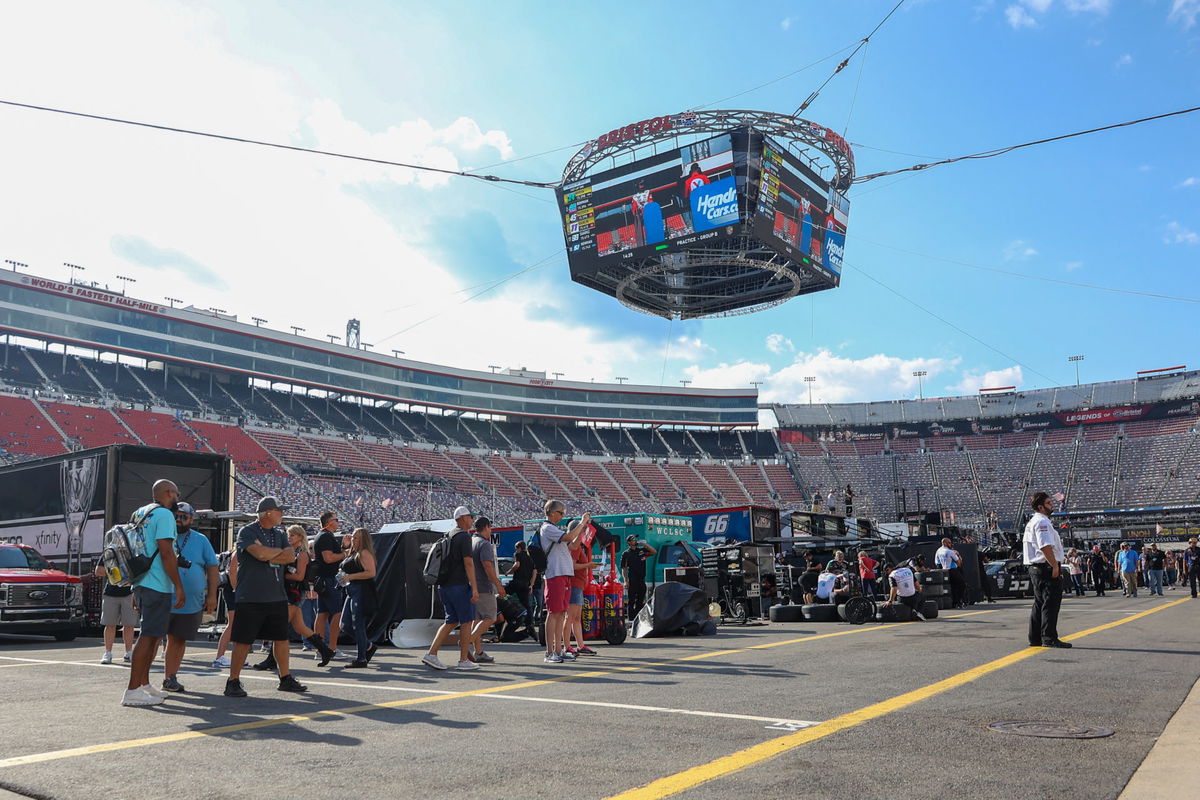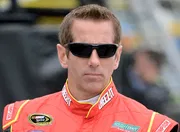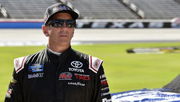
USA Today via Reuters
Sep 15, 2023; Bristol, Tennessee, USA; NASCAR fans watch from the pits during practice for the Bass Pro Shops Night Race at Bristol Motor Speedway. Mandatory Credit: Randy Sartin-USA TODAY Sports

USA Today via Reuters
Sep 15, 2023; Bristol, Tennessee, USA; NASCAR fans watch from the pits during practice for the Bass Pro Shops Night Race at Bristol Motor Speedway. Mandatory Credit: Randy Sartin-USA TODAY Sports
NASCAR’s Cup Series has shifted to a new address. Last month marked a seismic moment in motorsports broadcasting, as Amazon Prime Video grabbed the wheel, steering the sport into uncharted digital territory. With a seven-year media rights deal inked, Prime Video kicked off its run of five exclusive Cup Series races on May 25, 2025, with the Coca-Cola 600 at Charlotte Motor Speedway.
Watch What’s Trending Now!
Ross Chastain’s stunning climb from 40th to first lit up the stream, showcasing Prime’s knack for capturing high-octane drama. Meanwhile, Fox’s earlier races, like Talladega, caught flak for dropping live action during ad breaks, making Prime’s debut feel like a breath of fresh air. But not everyone’s cheering. The switch to streaming has sparked a firestorm among NASCAR’s loyal base, with traditional fans feeling left behind in the race to go digital.
Prime’s coverage, packed with slick tech and aimed at younger viewers, has drawn praise for innovation but also a wave of frustration from those who’ve bled stock car racing for decades. The fan consensus is in, but a deeper trouble looms over Prime at the moment.
ADVERTISEMENT
NASCAR’s streaming shift alienates core fans
Prime Video’s NASCAR debut is mirroring its rocky Thursday Night Football rollout three years ago: flashy for some, fatal for others. Through three races, Charlotte, Nashville, and Michigan, the Cup Series broadcasts on Prime averaged 2.27 million viewers, a 21% drop from last year’s equivalent races on Fox and FS1, which pulled 2.88 million.
Michael Mulvihill nailed it on X: “This has become predictable spin anytime an event moves to a streamer. It’s easy to look younger when you lose 5 older people for every 1 younger viewer you gain. Coke 600 Year-Year 18-54: Gained 147k viewers 55+: Lost 730k.” The math is brutal—losing nearly 750,000 fans over 55 to gain 150,000 in the 18-54 range only shows Prime’s shift in priorities.
ADVERTISEMENT
This has become predictable spin anytime an event moves to a streamer. It’s easy to look younger when you lose 5 older people for every 1 younger viewer you gain.
Coke 600 Year-Year
18-54: Gained 147k viewers
55+: Lost 730k https://t.co/gdAQx0i4LX— Michael Mulvihill (@mulvihill79) May 28, 2025
The youth grab is real. Viewership among 18-34-year-olds jumped 32%, from 177,000 to 233,000, while 18-49s rose 11% to 600,000, and 25-54s climbed 21% to 706,000. But the 55+ crowd, NASCAR’s bedrock, plummeted 40%, from 2.03 million to 1.21 million. Prime’s median viewer age, 56.5, skews younger than Fox’s 62.8 this season or last year’s 63.3 for the same races. Michigan’s 1.77 million was dwarfed by Fox’s Sonoma race last year at 2.90 million, while Fox’s UEFA Nations League Final outdrew NASCAR with 1.98 million. The numbers scream a harsh truth: older fans are bailing.
ADVERTISEMENT
This isn’t just a blip—it’s a generational rift. Younger fans are the future, no question. In 30 years, today’s kids will call the shots, just like in any sport or society. But torching the loyalty of fans who’ve poured decades into NASCAR feels like a betrayal. The 55+ crowd, who cheered Dale Earnhardt and Jeff Gordon, aren’t flocking to streaming apps. Losing them to gain a fraction of younger viewers stings, especially when NASCAR’s core identity thrives on tradition. Is a slight uptick in 18-34s worth alienating the heart of the fanbase?
Prime’s not blind to the backlash. Carl Edwards, now in the booth, shared a story about his 85-year-old neighbor, a Prime subscriber, promising to watch. But anecdotes don’t fix a 40% drop in older viewers. The Coca-Cola 600’s strong start fizzled, with Nashville and Michigan shedding viewers weekly. Compared to Fox’s panel-only numbers, Prime’s “big data” metrics look grim. The shift to streaming, while forward-thinking, risks leaving behind the fans who built NASCAR’s legacy.
The debate’s raging. Younger viewers bring growth potential, but at what cost? NASCAR is betting on Prime’s tech and reach to redefine the sport, but the early data suggests a painful trade-off. If the trend holds, the Mexico City race, Prime’s next big stage, could see even lower numbers unless older fans adapt. The sport’s at a crossroads—chase the future or honor the past?
ADVERTISEMENT
Top Stories
Another Almost Fatal Disaster Surfaces From Statesville Airport Amidst Ongoing Greg Biffle’s Crash Investigation

NTSB Appeals for Greg Biffle’s Wife’s Alleged In-Flight Text Messages as Crash Investigation Heats Up

Donald Trump Issues Moving Message of Condolence for NASCAR’s Greg Biffle & Family During North Carolina Address

Air Safety Investigator Probes Possible Co-Pilot Role Amid Greg Biffle’s Fatal Plane Crash Investigation

Horrific Aerial Footage of Greg Biffle’s Fatal Crash Emerges Leaving NASCAR Community in Tears

Prime video’s high-tech NASCAR revolution
While the viewership is shaky, on the production front, Prime Video isn’t just airing NASCAR, it’s reinventing how the sport hits screens. Streaming five exclusive Cup Series races, from the Coca-Cola 600 to Pocono on June 22, marks the first time Cup races are stream-only, a bold leap from traditional TV.
Tapping NBC Sports’ crack production team, Prime blends broadcast polish with streaming innovation, delivering crisp visuals and fresh features that aim to hook new fans while keeping diehards engaged. The platform’s shaking things up with dual-screen “double-box” formats during green-flag racing, ensuring ads don’t steal laps from viewers.
ADVERTISEMENT
In-race highlight recaps let late joiners catch up fast, keeping casual fans in the loop and hardcore ones glued. Practice and qualifying sessions, once buried on premium apps, now stream extensively, offering a peek into team prep and driver form. It’s a deeper dive into NASCAR’s grind, packaged for a digital crowd. The Burn Bar was a new feature for the fans during the Michigan race, where they were involved with the racing strategies as much as the crew chief.
Prime’s studio crew—Danielle Trotta hosting with analysts Carl Edwards, Corey LaJoie, and Trevor Bayne—brings credibility. Edwards, a Hall of Famer, bridges old-school fans and newbies, sharing strategy insights with a nod to his 85-year-old neighbor’s Prime enthusiasm. Drawing from its NFL playbook, Prime simplifies complex race tactics, making NASCAR more accessible while deepening the experience for veterans. It’s a smart play to grow the sport, even if older fans are slow to follow.
ADVERTISEMENT
ADVERTISEMENT
ADVERTISEMENT
ADVERTISEMENT

